Table of Contents
Introduction: What Are OTC Medicines?
OTC medicines, or over-the-counter medicines, are non-prescription drugs that anyone can purchase without a doctor’s approval. They’re often used to manage everyday health problems such as headaches, colds, fever, muscle pain, indigestion, allergies, or mild skin conditions. Whether you’re reaching for a pain reliever or an antacid, these medicines are trusted by millions around the world as a fast, affordable, and convenient solution.
From pharmacies to grocery stores and even online platforms, OTC medicines are widely available and come in many forms—tablets, syrups, creams, sprays, and more. They are regulated by health authorities like the FDA (U.S. Food and Drug Administration) to ensure safety and effectiveness when used correctly. However, their easy availability doesn’t mean they’re always harmless. Improper use, incorrect dosage, or mixing with other medications can lead to side effects or serious health complications.
That’s why it’s essential to understand how OTC medicines work, how to choose the right one, and how to use them safely. In this blog, you’ll learn:
- The most common types of OTC medicines and what they treat
- How to read OTC medicine labels like a pro
- Safety tips to avoid side effects and drug interactions
- Who should be cautious or avoid certain OTC drugs
- How to know when it’s time to see a doctor instead
Let’s begin by exploring the different categories of OTC medicines and what health issues they help treat.

What Are the Most Common OTC Medicines?
OTC medicines are widely used to treat common health problems without the need for a doctor’s prescription. Each type is designed to target specific symptoms, offering quick and convenient relief. Below are some of the most commonly used categories of OTC medicines and what they treat:
1. Pain Relievers
These OTC medicines help relieve discomfort from headaches, fevers, and body aches.
- Examples: Paracetamol (Tylenol), Ibuprofen (Advil), Aspirin
- Used For: Headaches, fever, menstrual cramps, muscle pain, arthritis, and dental pain
- Note: Ibuprofen and aspirin also reduce inflammation but may irritate the stomach if taken on an empty stomach.
2. Cold and Flu Medications
Cold and flu OTC medicines are usually a combination of drugs that tackle multiple symptoms at once.
- Examples: Antihistamines, decongestants, cough syrups (e.g., Diphenhydramine, Pseudoephedrine)
- Used For: Runny nose, cough, nasal congestion, sore throat, mild fever
- Caution: Some may cause drowsiness, especially nighttime formulas.
3. Digestive Medicines
These OTC medicines target the digestive system to relieve discomfort and restore balance.
- Examples:
- Antacids (Calcium carbonate) – for heartburn or acid reflux
- Laxatives (Psyllium husk, Lactulose) – for constipation
- Anti-diarrheals (Loperamide) – for diarrhea
- Used For: Indigestion, bloating, constipation, diarrhea
4. Allergy Medications (Antihistamines)
These are among the most trusted OTC medicines for managing seasonal or environmental allergies.
- Examples: Cetirizine, Loratadine, Diphenhydramine
- Used For: Sneezing, hives, itchy skin, watery eyes, allergic reactions
- Tip: Non-drowsy options like Loratadine are better for daytime use.
5. Topical Medicines
These OTC medicines come in the form of creams, ointments, or gels and are applied directly to the skin.
- Examples:
- Hydrocortisone cream – for itching and inflammation
- Antibiotic ointments (e.g., Neosporin) – for minor cuts and wounds
- Calamine lotion – for insect bites or skin irritation
- Used For: Skin rashes, minor burns, eczema, cuts, and fungal infections
These OTC medicines are easily available in pharmacies, supermarkets, and online stores. However, choosing the right one requires a basic understanding of how they work and whether they’re safe for your specific needs.
How Do OTC Medicines Work?
OTC medicines work by addressing the symptoms rather than the root cause of a condition. They contain active ingredients that produce a specific effect on the body. Here’s how some of them function:
- Paracetamol (Acetaminophen): Reduces pain and fever by acting on the brain’s pain-control center.
- Ibuprofen: Blocks the body’s production of substances (prostaglandins) that cause inflammation and pain.
- Antacids: Neutralize excess stomach acid to relieve heartburn or indigestion.
- Antihistamines: Block histamine, a chemical released during allergic reactions, reducing sneezing, itching, and swelling.
Some cold and flu OTC medicines may combine several active ingredients—for example, a pain reliever, a decongestant, and a cough suppressant—all in one dose. That’s why reading the label is essential to avoid accidental overdose or mixing with similar drugs.
Why Do People Choose OTC Medicines?
There are several reasons why OTC medicines are the first choice for managing minor health problems:
- Easily accessible — No prescription required
- More affordable — Generally cheaper than prescription drugs
- Fast relief — Designed for quick symptom control
- Convenient — Available in pharmacies, stores, and online
- Well-tested and regulated — Approved by authorities like the FDA
Their widespread availability makes them appealing for short-term treatment. However, their ease of use sometimes leads people to overlook potential risks.
Risks of Using OTC Medicines
Though OTC medicines are considered safe when used correctly, they can be harmful if misused or overused. Here are the main risks to watch for:
1. Overdose
Taking more than the recommended dose—especially with drugs like paracetamol or ibuprofen—can lead to liver or kidney damage. Many cold and flu medicines contain overlapping ingredients, which can unintentionally double your dose.
2. Side Effects
Common side effects may include drowsiness, nausea, upset stomach, or dizziness. Everyone reacts differently, and even mild side effects can affect your daily routine.
3. Drug Interactions
OTC medicines can interact with prescription drugs, herbal supplements, or even other OTC products. For example, taking aspirin with blood thinners can increase the risk of bleeding.
4. Allergic Reactions
Some people are allergic to certain ingredients like NSAIDs or dyes used in tablets and syrups. Symptoms can range from a mild rash to severe breathing problems.
5. Delay in Professional Treatment
Relying on OTC medicines for too long can mask symptoms of serious conditions like infections, heart problems, or ulcers. Always seek medical advice if symptoms persist.

How to Read OTC Medicine Labels Correctly
Every time you reach for OTC medicines, the first step to safety is reading the label. The label provides essential information that helps you understand how the medicine works, how to use it properly, and what to avoid.
Here’s what you should always check on an OTC medicine label:
- Active Ingredients: These are the main components that make the medicine work. If you’re taking multiple OTC medicines, make sure the active ingredients don’t overlap to avoid overdose.
- Purpose: The label tells you what the medicine is designed for—pain relief, allergy control, fever reduction, etc.
- Dosage Instructions: It’s critical to follow the recommended amount and frequency. Overuse can cause serious harm.
- Warnings: This section tells you who should avoid the medicine, potential drug interactions, and conditions that make the drug unsafe.
- Side Effects: Common side effects like drowsiness, nausea, or dizziness are usually listed here.
- Storage Information: Learn how to store the medicine properly to maintain its effectiveness.
Reading the label carefully ensures that you use OTC medicines safely and avoid harmful mistakes.
Who Should Be Extra Cautious With OTC Medicines?
While OTC medicines are generally safe when used correctly, they are not suitable for everyone. Certain individuals should be especially cautious:
- Pregnant or Breastfeeding Women: Some ingredients can pass to the baby and may be harmful.
- Children (especially under 12): Children’s bodies process medications differently. Use only child-specific formulations and dosages.
- Older Adults: Aging bodies are more sensitive to drug effects and interactions, especially with heart, kidney, or liver issues.
- People with Chronic Illnesses: Conditions like high blood pressure, heart disease, liver problems, or kidney disease may worsen with certain OTC drugs.
- Those Taking Other Medications: OTC medicines can interact with prescriptions or even vitamins and supplements.
If you fall into any of these categories, consult a doctor or pharmacist before using any new OTC product.
How Long Is It Safe to Use OTC Medicines?
OTC medicines are designed for short-term symptom relief, not long-term treatment. Using them for extended periods without medical supervision can lead to complications.
General Guidelines:
- Pain relievers: Use for no more than 3 to 5 days unless advised by a healthcare provider.
- Nasal sprays: Should not be used longer than 3 consecutive days, or they may cause rebound congestion.
- Laxatives: Prolonged use may disrupt your digestive system’s natural rhythm.
Important: If your symptoms don’t improve or return frequently, it’s a signal that you need medical evaluation.
How to Store OTC Medicines Safely
Proper storage ensures OTC medicines remain effective and safe to use. Here’s how to do it right:
- Store in a cool, dry place (avoid humidity-prone bathrooms).
- Keep all medicines out of reach of children and pets.
- Always check expiry dates and discard any expired or discolored medicine.
- Never mix multiple medicines in the same container—this can cause confusion and even chemical interactions.
Good storage habits help maintain the potency and safety of your over-the-counter treatments.
Where to Buy OTC Medicines Safely
OTC medicines are widely available, but that doesn’t mean every source is safe. Here’s where you should (and shouldn’t) shop:
Safe Places to Buy:
- Local Pharmacies: Offer reliable products and in-person advice.
- Supermarkets: Stock popular and trusted OTC brands.
- Licensed Online Pharmacies: Convenient and safe—just ensure the website is verified and regulated.
Avoid:
- Street vendors or unlicensed sellers
- Unknown online shops with no clear credentials
- Products without proper labeling or expiry dates
Buying from trusted sources protects you from counterfeit or expired drugs that can be dangerous.
How to Talk to a Pharmacist About OTC Medicines
Pharmacists are often the first line of healthcare when using OTC medicines. They’re trained to offer expert guidance.
When speaking with a pharmacist, be ready to:
- Describe your symptoms clearly
- List current medications or supplements you’re taking
- Mention any allergies or past reactions
- Ask about proper dosage, timing, and side effects
Don’t hesitate to seek help-pharmacists can ensure you choose the safest and most effective treatment for your needs.
Real-Life Stories: How OTC Medicines Helped Everyday People
Many people successfully manage mild health issues using OTC medicines:
- Ali, a stressed college student, takes paracetamol during exams to relieve tension headaches.
- Zara, a busy mother of two, uses antacids to calm her occasional heartburn after spicy meals.
- Rehan, a 60-year-old gardener, uses allergy tablets in spring to deal with seasonal sneezing and itching.
These everyday examples show how OTC medicines can improve quality of life when used wisely.
Essential Tips for the Safe Use of OTC Medicines
To get the benefits of OTC medicines without the risks, follow these safety tips:
- Always read and follow the label
- Never exceed the recommended dose
- Don’t share your medicine with others
- Avoid alcohol when using OTC drugs unless the label says it’s safe
- Track all medications you’re taking to avoid harmful interactions
- Ask your doctor or pharmacist if you’re unsure about anything
Using OTC medicines responsibly means you can get fast, reliable relief without compromising your health.
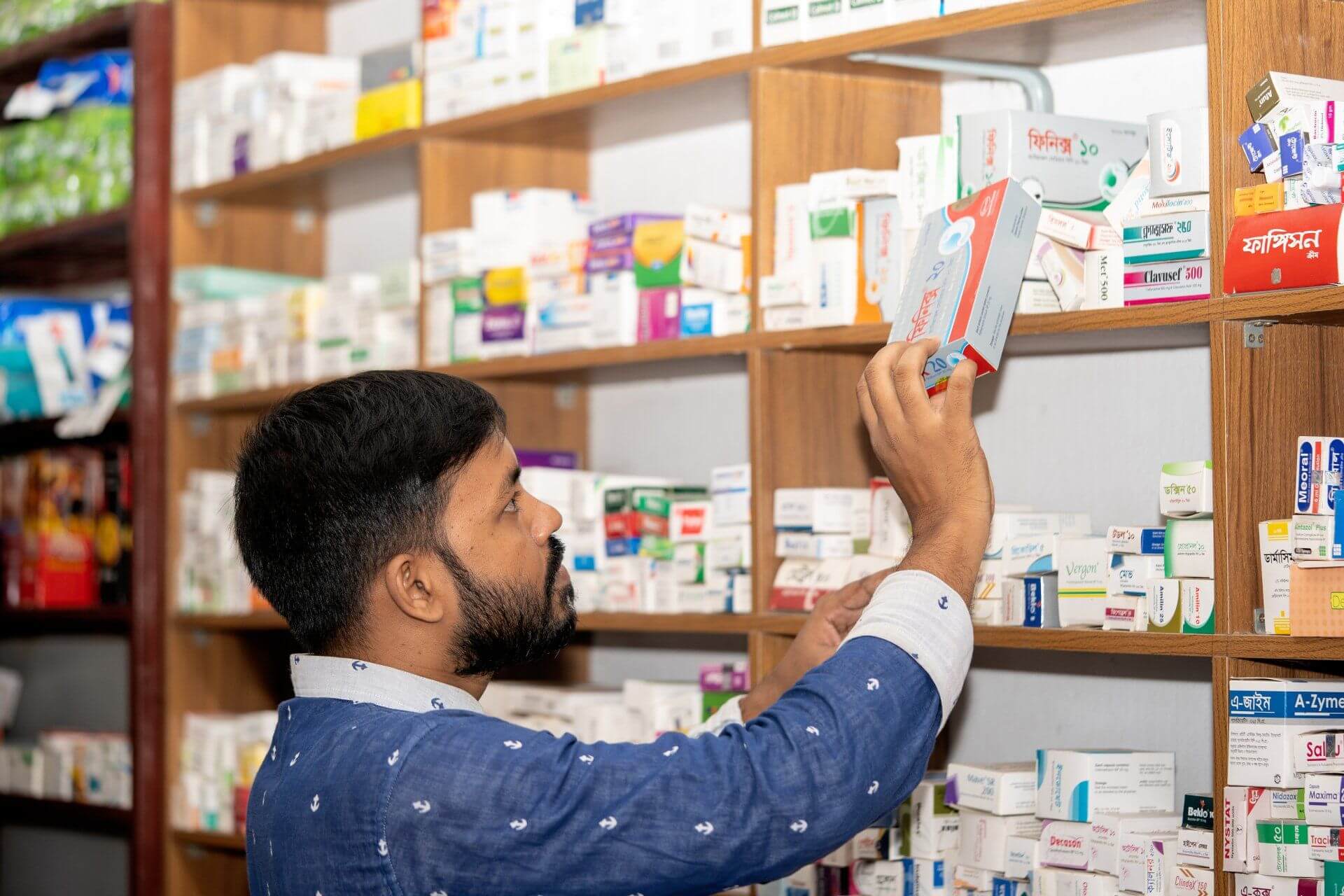
Are Herbal Products Considered OTC Medicines?
While some herbal and natural remedies are available in the same places as OTC medicines, they are not always classified the same way. Unlike approved over-the-counter drugs, most herbal products are not regulated by the FDA in the same strict manner. This means they may not go through the same testing for safety, quality, or effectiveness.
Just because something is labeled “natural” doesn’t mean it’s safe. Herbal supplements can still cause:
- Side effects
- Drug interactions
- Allergic reactions
Always consult your doctor or pharmacist before combining herbal products with other OTC or prescription medications.
Common Myths About OTC Medicines
Many people believe that because OTC medicines don’t require a prescription, they’re completely harmless. This leads to some dangerous assumptions. Let’s clear up some of the most common myths:
Myth 1: OTC Medicines Are Always Safe
Truth: They’re safe when used as directed. Overuse or misuse can lead to liver damage, stomach ulcers, or dangerous interactions.
Myth 2: You Can Take as Much as You Want
Truth: Dosing matters. Doubling up can increase risks without added benefit. Always follow the labeled instructions.
Myth 3: Children Can Use Adult OTC Drugs
Truth: Children need specially formulated medicines. Adult doses can be toxic for kids. Always use pediatric versions with age-appropriate dosing.
OTC Medicines vs. Natural Remedies: Which Is Safer and More Effective?
Both OTC medicines and natural remedies have their place, but there are key differences in how they’re tested and used.
| Feature | OTC Medicines | Natural Remedies |
|---|---|---|
| Scientific Testing | Yes (FDA regulated) | Often limited or anecdotal |
| Dosage Control | Clear and consistent | Varies by brand and product |
| Speed of Relief | Fast | May take time |
| Risks | Known side effects listed | Less predictable |
Verdict: For fast, evidence-backed relief, OTC medicines are usually the safer choice. But natural remedies may help as part of a supportive routine when used cautiously.
OTC Medicines vs. Prescription Drugs: Know the Difference
Understanding the distinction between OTC medicines and prescription drugs helps you make better healthcare decisions.
| Feature | OTC Medicines | Prescription Medicines |
|---|---|---|
| Doctor Required | No | Yes |
| Cost | Lower | Often higher |
| Availability | Easily accessible | Pharmacy only |
| Use Case | Mild symptoms | Serious/chronic conditions |
Both play important roles. OTC medicines are best for short-term, manageable issues, while prescriptions target complex or long-term health conditions.
Common Mistakes People Make With OTC Medicines
Despite their accessibility, OTC medicines can be misused in ways that lead to serious health risks. Here are some common errors:
- Doubling doses: Accidentally taking two products with the same active ingredient (like two cold medicines containing paracetamol).
- Ignoring contraindications: Taking OTC meds while on blood pressure pills, blood thinners, or antidepressants without medical advice.
- Mixing with alcohol: Many OTC drugs interact dangerously with alcohol, especially painkillers and sedatives.
- Using expired products: Ineffective or unsafe when ingredients degrade over time.
Tip: Keep a list of all medications you use (including OTC) and review it with a doctor or pharmacist regularly.
When to Stop Using OTC Medicines and See a Doctor
OTC medicines are not a replacement for professional care. Here’s when to stop self-medicating and consult a doctor:
- Symptoms last more than 3–5 days
- Pain or fever returns frequently
- New symptoms develop
- OTC medicine stops working
- Severe side effects like vomiting, rash, or breathing problems
Prompt medical attention can prevent complications and reveal underlying conditions that need diagnosis.
Generic vs. Brand OTC Medicines: What You Should Know
Many consumers are confused about whether generic OTC medicines are as effective as brand-name versions. Here’s the truth:
What’s the Same:
- Active ingredients
- Dosage strength
- Safety and effectiveness
What’s Different:
- Price – Generics are often 30–80% cheaper
- Packaging and branding
- Inactive ingredients – May vary slightly
Tip: Generic OTC medicines are FDA-approved and just as effective when used properly. Ask your pharmacist for reliable generic options to save money.
How Are OTC Medicines Regulated in the U.S.?
In the U.S., the Food and Drug Administration (FDA) oversees the approval and regulation of OTC medicines. There are two main pathways:
- OTC Monograph: Standardized rules for common ingredients used in familiar conditions (e.g., pain relief, allergy treatment).
- New Drug Application (NDA): Required for novel or non-standard OTC drugs.
Remember: Just because a product is sold without a prescription doesn’t mean it’s 100% safe for everyone. The FDA monitors safety post-market as well.
Hidden Ingredients in OTC Products You Should Watch For
Many OTC medicines—especially liquids, chewables, and topicals—contain hidden ingredients that can cause side effects or allergic reactions:
- Artificial dyes – May trigger allergies in sensitive individuals.
- Preservatives (e.g., parabens) – Linked to skin irritation or hormonal disruption.
- Sweeteners (aspartame, sorbitol) – Can cause bloating or are unsafe for people with certain conditions (like PKU).
- Fragrances or menthol – Found in creams, may irritate sensitive skin.
Check the inactive ingredient list if you have allergies, dietary restrictions, or sensitive skin.
Cultural Beliefs and OTC Medicine Use Around the World
Different cultures have unique approaches to using OTC medicines:
- In Japan, many people prefer herbal remedies first and seek medical care only after natural options fail.
- In Germany, homeopathic OTC products are extremely popular and even available in pharmacies.
- In India, OTC antibiotic misuse is a major issue due to limited enforcement of prescription laws.
- In the U.S., convenience drives OTC usage, with people often relying on pharmacists for quick advice.
Understanding these cultural perspectives helps promote better health education and safer OTC usage worldwide.
Use OTC Medicines Wisely
OTC medicines are powerful tools for managing everyday health concerns—from headaches and allergies to colds and stomach issues. When used correctly, they offer fast, affordable relief and save you a trip to the doctor.
Safety Checklist:
- Read the label carefully
- Follow dosage instructions exactly
- Don’t use expired or shared medicines
- Ask a healthcare provider if unsure
- Keep out of children’s reach
- Report unusual symptoms promptly
With the right knowledge, you can use OTC medicine confidently and safely as part of your health routine.can be a safe and powerful part of your healthy life.
for Our recent post click here
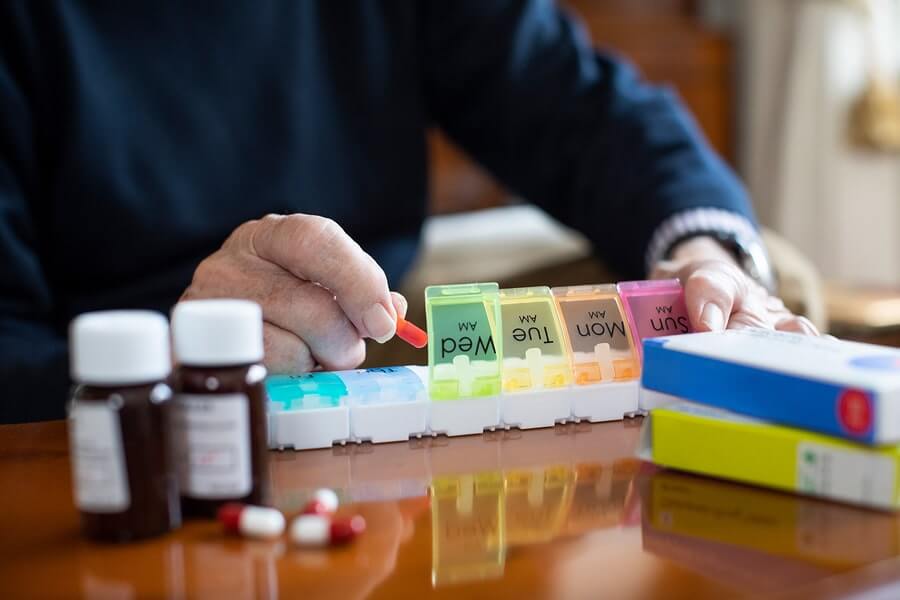
don’t fix the underlying issue. If symptoms persist or get worse, see a healthcare provider.
FAQs About OTC Medicines
Q1: Can I use OTC medicines while pregnant?
Not all OTC medicines are safe during pregnancy. Even common products like cold remedies or painkillers may pose risks, especially in the first trimester. Always consult your doctor or pharmacist before taking any over-the-counter medication while pregnant or breastfeeding.
Q2: Are OTC medicine safe for children?
Yes, OTC medicine can be safe for children, but only when specifically formulated for pediatric use. Adult medications should never be given to children. Always check the label for age guidelines and use the correct dosage tool (not a kitchen spoon) based on the child’s weight and age.
Q3: What should I do if I miss a dose of an OTC medicine?
Most OTC medicine are taken as needed, so missing a dose is usually not harmful. If you’re using a regular regimen like antihistamines or heartburn tablets, simply resume your normal schedule without doubling the dose.
Q4: Can I drive after taking OTC medicine?
Some OTC medicine-especially allergy pills, cold remedies, or sleep aids—can cause drowsiness or slow your reaction time. Always read warning labels. If a medicine lists drowsiness as a side effect, avoid driving or operating heavy machinery.
Q5: How do I dispose of expired OTC medicine?
Proper disposal of expired OTC medicine is important. Don’t flush them or toss them in the trash. Use pharmacy take-back programs or mix pills with coffee grounds or cat litter, seal in a bag, and discard in the household waste. Check local regulations or pharmacy services.
Q6: Are there natural OTC alternatives?
Some natural remedies-like ginger for nausea or honey for sore throat-are popular, but they’re not always regulated or tested like standard OTC medicine. Even natural products can interact with other drugs, so always consult a healthcare provider before using them.
Q7: Can I take two OTC medicine at the same time?
Yes, but with caution. Many OTC medicines share the same active ingredients (e.g., paracetamol or ibuprofen). Accidentally doubling up can be dangerous. Always read labels closely and consult a pharmacist to avoid unintentional overdosing.
Q8: How long can I use an OTC medicine safely?
Most OTC medicines are designed for short-term use—typically 3 to 10 days. Prolonged use can mask serious health problems or lead to side effects. If symptoms persist or return frequently, seek medical advice instead of continuing self-treatment.
Q9: Do OTC medicine interact with prescription drugs?
Yes. Even basic OTC medicines like antacids or painkillers can interfere with prescription medications, affecting their absorption or potency. Always inform your doctor or pharmacist about everything you’re taking—including vitamins, supplements, and herbal products.
Q10: Can I develop a tolerance to OTC medicine?
Some OTC products, such as decongestant nasal sprays or sleep aids, can become less effective over time. This may lead to overuse or dependency. To avoid this, use these medicines occasionally and follow the usage instructions carefully.
Q11: What does “non-drowsy” mean on the label?
A “non-drowsy” OTC medicine is formulated to reduce symptoms without causing sleepiness. However, individual responses vary—some people may still feel fatigued. Monitor how your body reacts before engaging in activities like driving.
Q12: Are generic OTC medicine as good as brand names?
Yes. Generic OTC medicines have the same active ingredients, strength, and safety standards as brand-name versions. They are FDA-approved and often cost less. The main differences lie in packaging and non-active components like flavor or color.
Q13: How should I store OTC medicine at home?
Store OTC medicines in a cool, dry place away from sunlight, heat, and moisture. Bathrooms are not ideal due to humidity. Keep them in original containers, out of reach of children—ideally in a locked cabinet or high shelf.
Q14: What are “active ingredients” and why are they important?
The active ingredient is the component of the medicine that directly treats your symptoms. It’s essential to understand what the active ingredient is so you don’t take multiple products with the same compound—preventing accidental overdose or side effects.
Q15: Do OTC medicine cure illnesses or just treat symptoms?
Most OTC medicines focus on symptom relief rather than curing the underlying illness. For example, a pain reliever reduces discomfort, but doesn’t treat the cause of the pain. If symptoms persist, a deeper medical evaluation may be necessary.
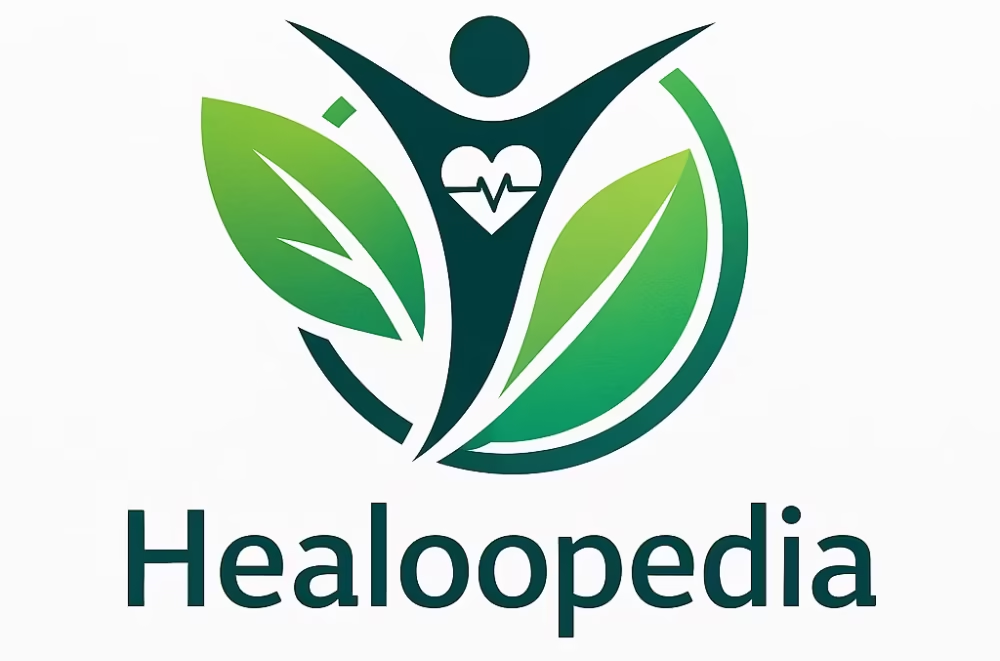
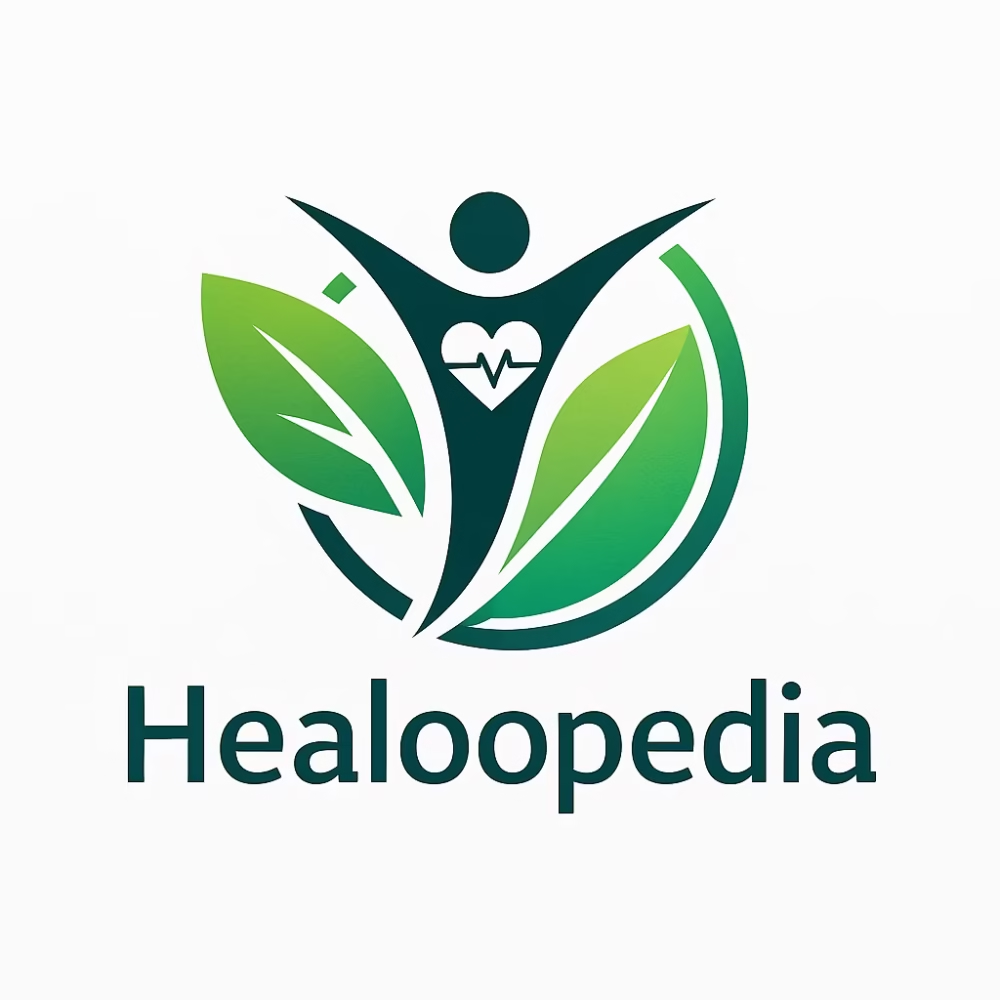
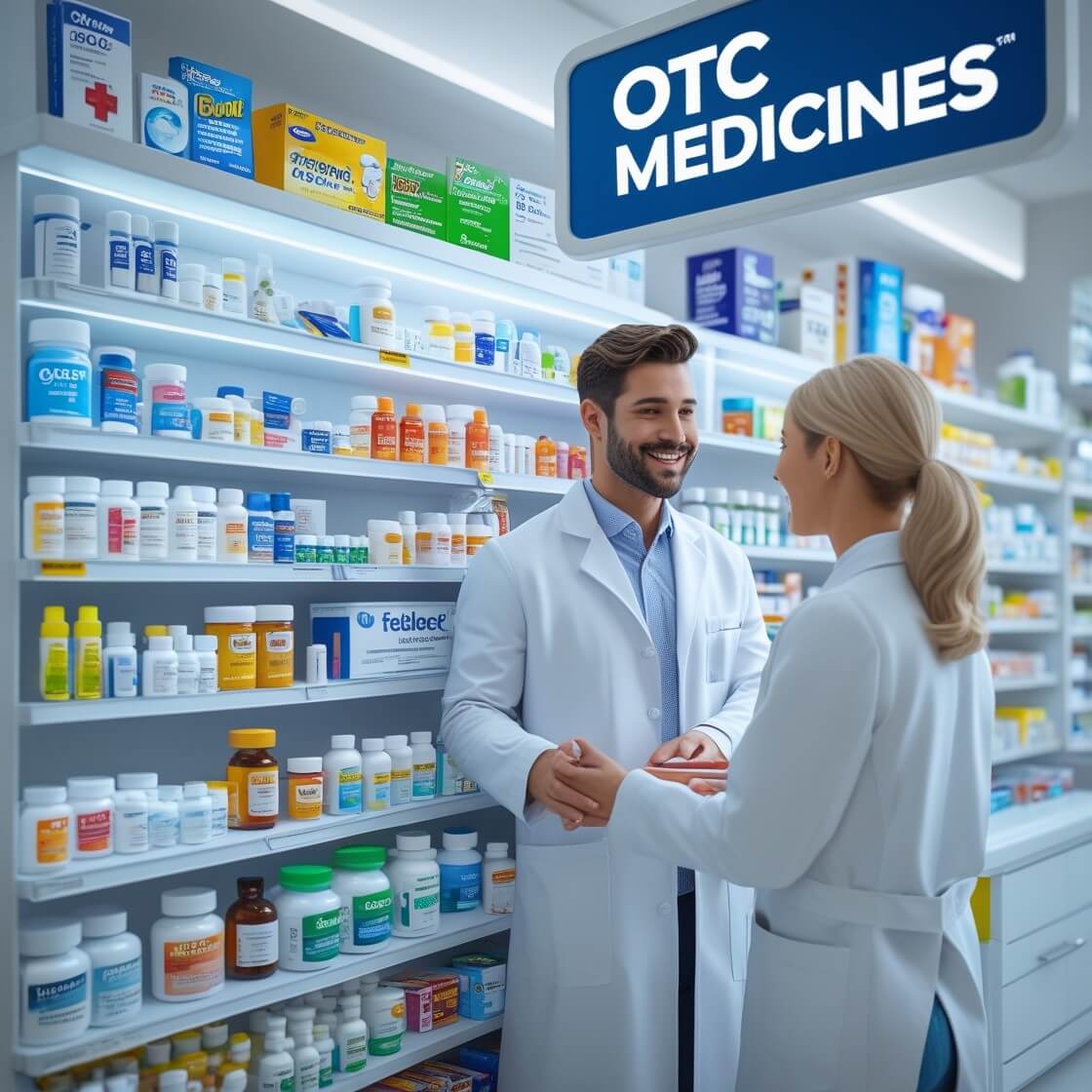


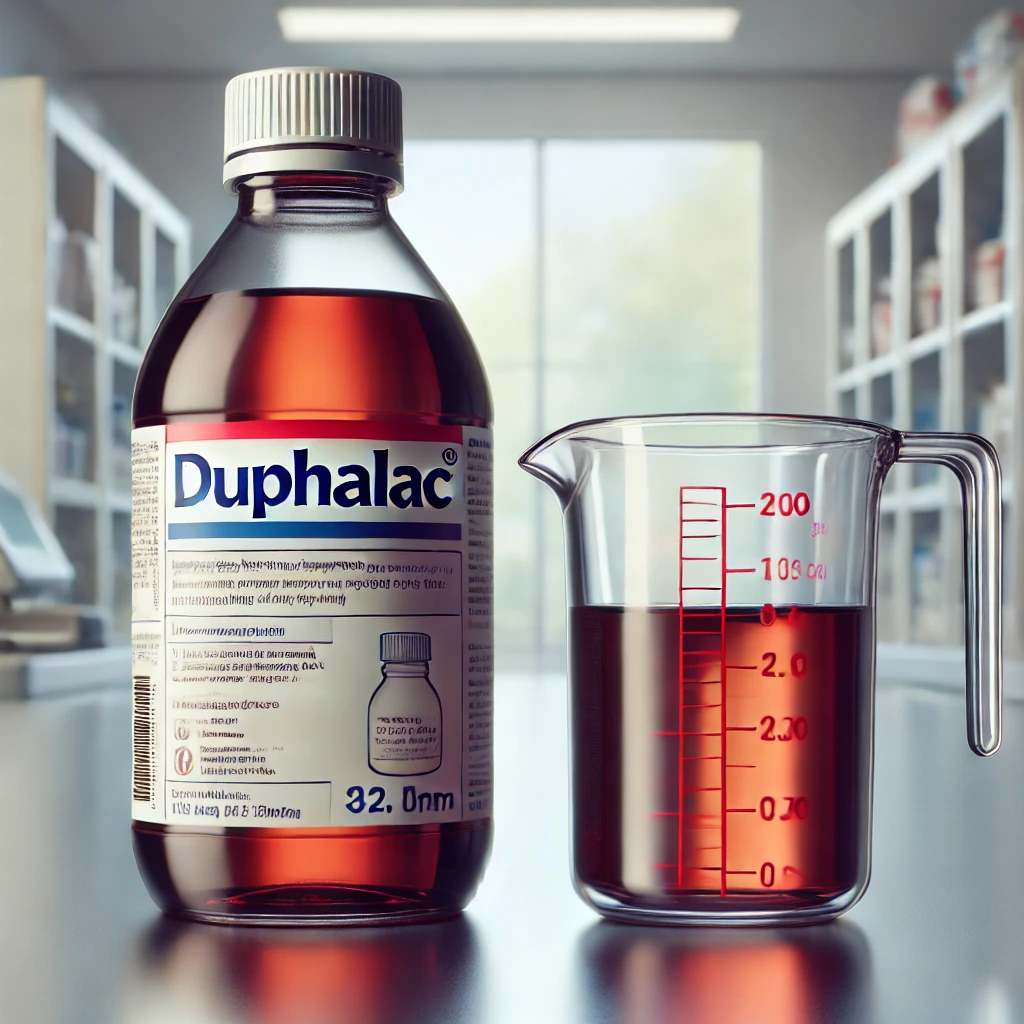
Hey! This post could not be written any better! Reading through this post reminds me of my good old room mate! He always kept talking about this. I will forward this post to him. Fairly certain he will have a good read. Many thanks for sharing!
But a smiling visitor here to share the love (:, btw outstanding design and style.
I’ll right away grab your rss as I can’t find your email subscription link or newsletter service. Do you’ve any? Kindly let me know so that I could subscribe. Thanks.
I am not positive the place you’re getting your information, but great topic. I must spend a while learning more or understanding more. Thanks for magnificent information I was on the lookout for this information for my mission.
Rattling nice pattern and great content, practically nothing else we require : D.
Hello just wanted to give you a quick heads up. The text in your content seem to be running off the screen in Chrome. I’m not sure if this is a format issue or something to do with internet browser compatibility but I figured I’d post to let you know. The design look great though! Hope you get the issue solved soon. Kudos
Those are yours alright! . We at least need to get these people stealing images to start blogging! They probably just did a image search and grabbed them. They look good though!
I saw a lot of website but I conceive this one has got something special in it in it
Have you ever considered publishing an ebook or guest authoring on other blogs? I have a blog centered on the same subjects you discuss and would love to have you share some stories/information. I know my readers would enjoy your work. If you’re even remotely interested, feel free to shoot me an e mail.
Very interesting info !Perfect just what I was searching for! “Music is a higher revelation than philosophy.” by Ludwig van Beethoven.
Merely wanna comment that you have a very nice web site, I enjoy the design it actually stands out.
Magnificent beat ! I would like to apprentice while you amend your website, how could i subscribe for a blog web site? The account helped me a acceptable deal. I had been a little bit acquainted of this your broadcast offered bright clear idea
Hi, Neat post. There’s a problem with your website in internet explorer, would check this… IE still is the market leader and a large portion of people will miss your great writing due to this problem.
I think you have remarked some very interesting points, appreciate it for the post.
Wonderful goods from you, man. I’ve understand your stuff previous to and you’re just too magnificent. I actually like what you have acquired here, certainly like what you are stating and the way in which you say it. You make it entertaining and you still take care of to keep it smart. I can’t wait to read far more from you. This is actually a tremendous website.
You made some clear points there. I did a search on the issue and found most individuals will go along with with your website.
Mexswinmx is a newer site, I think. The selection of games is still growing, but they have some good ones already. I like the overall feel of the casino, it’s nice and modern. Take a look at mexswinmx.
I love it when folks get together and share thoughts.
Great blog, stick with it!
Some truly interesting info , well written and generally user genial.
Thanks , I’ve recently been searching for information about this topic for ages and yours is the best I’ve discovered so far. But, what about the conclusion? Are you sure about the source?